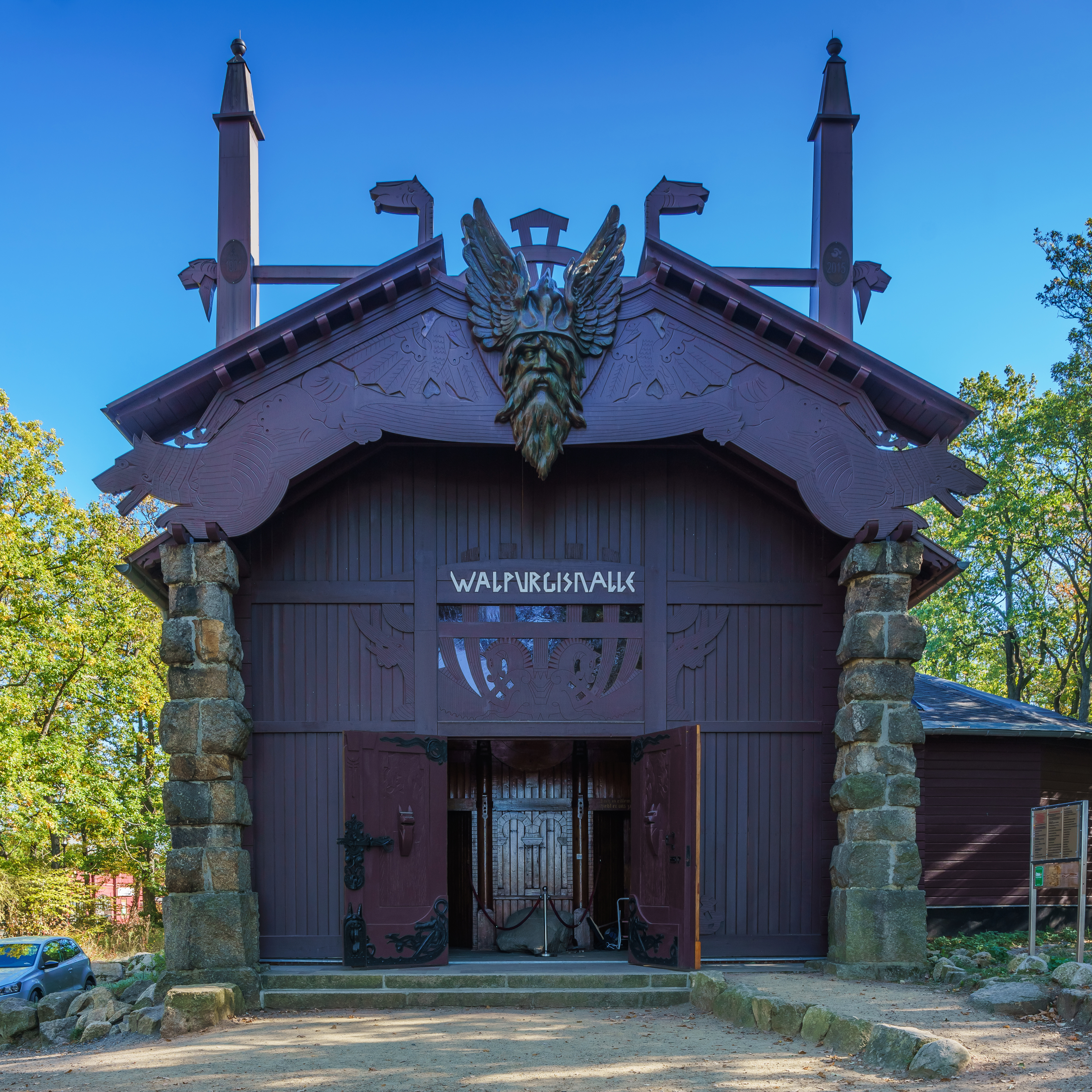|
Hexentanzplatz (Harz)
The ''Hexentanzplatz'' (literally “Witches′ Dance Floor”) in the Harz mountains is a plateau () that lies high above the Bode Gorge, opposite the Rosstrappe in Saxony-Anhalt, Germany. History The Hexentanzplatz is reputedly an Old Saxon cult site, at which pagan celebrations were held in honour of the so-called Hagedisen (forest and mountain goddesses), particularly on the night of 1 May. The place did not become known as the ''Hexentanzplatz'' until the cult was banned by the invading Christian Franks. According to tradition the site was guarded by Frankish soldiers in order to enforce the ban and they were chased off by Saxons dressed as witches and riding on broomsticks. Another old Saxon cult site is found on the Brocken. Above the Hexentanzplatz are the remains of the (“Saxon Dyke”), a wall of granite rocks and possibly part of a larger fortification, more than 1,500 years old. Tourism Since the middle of the 19th century there has been a mountain ho ... [...More Info...] [...Related Items...] OR: [Wikipedia] [Google] [Baidu] |
Bodetal2
The Bode Gorge (german: Bodetal) is a long ravine that forms part of the Bode valley between Treseburg and Thale in the Harz Mountains of central Germany. The German term, ''Bodetal'' (literally "Bode Valley"), is also used in a wider sense to refer to the valleys of the Warme and Kalte Bode rivers that feed the River Bode. At the Bode Gorge, the River Bode, which rises on the highest mountain in the Harz, the Brocken, has cut deeply into the hard Ramberg granite rock. The ravine is about 140 m deep at Treseburg and some 280 m deep at Thale where it breaks out into the Harz Foreland. The Bode Gorge was designated a nature reserve as early as 5 March 1937; its boundaries being subsequently expanded. With an area of, currently , it is one of the largest nature reserves in Saxony-Anhalt. Geology Apart from intrusions of Ramberg granite, which rose to the surface and solidified 300 million years ago in the Upper Carboniferous Period, and their associated veins o ... [...More Info...] [...Related Items...] OR: [Wikipedia] [Google] [Baidu] |
Walpurgishalle
The Walpurgis Hall (german: Walpurgishalle) is a hall on the Witches' Dance Floor near Thale in the Harz mountains, Germany, built in the Old Germanic style by Hermann Hendrich and Bernhard Sehring. The hall was opened in 1901 and is a museum today. Whilst Sehring designed the architecture of the building to Hendrich's guidelines, Hendrich himself was responsible for the five large paintings in the interior of the hall. These portray scenes of the Walpurgis Night from Goethe's Faust Faust is the protagonist of a classic German legend based on the historical Johann Georg Faust ( 1480–1540). The erudite Faust is highly successful yet dissatisfied with his life, which leads him to make a pact with the Devil at a crossroa ... known as the: ''Will-o'-the-Wisp Dance'', ''Mammon's Cave'', ''Witches' Dance'', ''Bride of the Wind'' und ''Gretchen's Appearance'' (''Gretchen's Tragedy''). Paintings Walpurgishalle Irrlichtertanz.jpg, Will-o'-the-Wisp Dance Walpurgishalle Mamm ... [...More Info...] [...Related Items...] OR: [Wikipedia] [Google] [Baidu] |
Harzer Wandernadel
The Harzer Wandernadel is a system of hiking awards in the Harz mountains in central Germany. The hiker (or mountain biker) can earn awards at different levels of challenge by walking to the various checkpoints in the network and stamping his or her passbook to record the visit. With 222 checkpoints in three federal states and across five districts in the Harz and with membership in five figures, the system has gained a following Germany-wide. Purpose The idea of the ''Wandernadel'' (literally "hiking needle/pin" --> "hiking badge") is to give those holidaying in the Harz a worthwhile goal to achieve and encourage them to stay for longer or return. It also aims to encourage those who live in the local area to go hiking and improve their fitness. In addition the system helps tourists and locals to get to know the many different sights and hiking trails in the Harz. To that end, checkpoints have been located at scenic viewing points, places of geological or botanical, culturalbo ... [...More Info...] [...Related Items...] OR: [Wikipedia] [Google] [Baidu] |



